By Jennifer Macke and Beth Cortright
The 2024 Los Alamos County science fair was held on January 20, 2024. Each year, PEEC provides small cash awards to students at the fair. In judging for these prizes, we look for projects that take inspiration from nature, particularly those that use local materials from nature, are conducted outdoors, or aim to improve and understand the environment.
Reducing the Effect of Methane on Global Warming
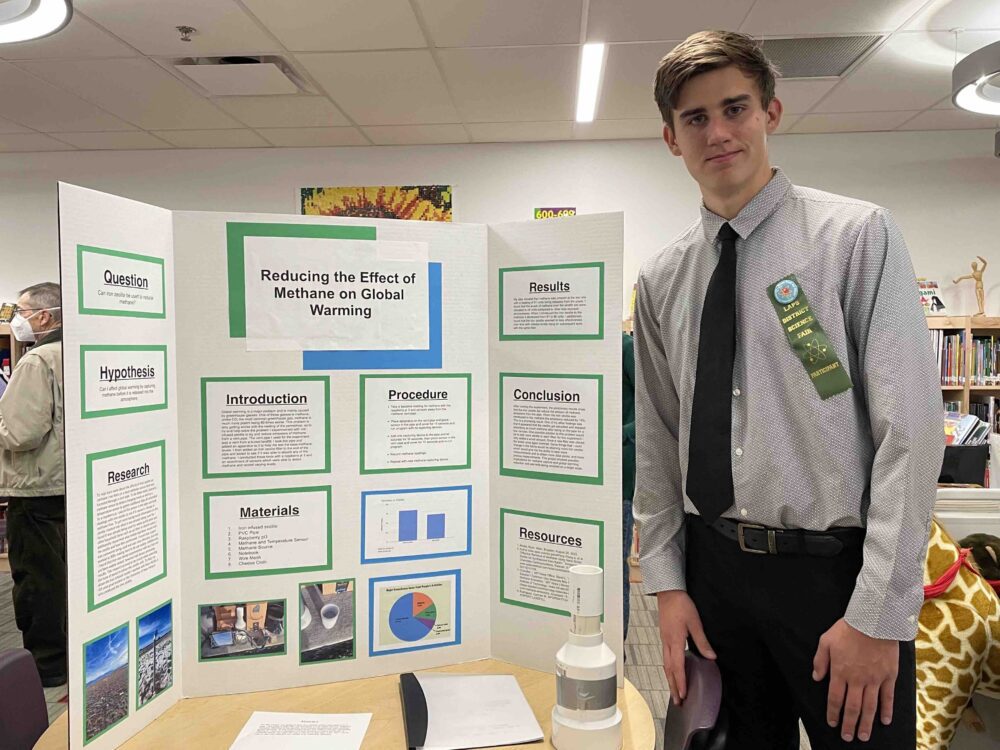
Brayden Allen, Senior Division
This project tested a possible strategy for reducing greenhouse gasses by trapping CO2 chemically with zeolite. The student used gas escape pipes located above a landfill in Los Alamos as the methane source, and fitted a zeolite-containing canister onto the pipe. Methane emitted was measured with and without the zeolite. We were impressed by the student’s use of a local emission source and creativity in the design of the device.
The Effects of Soil Quality on Seedlings
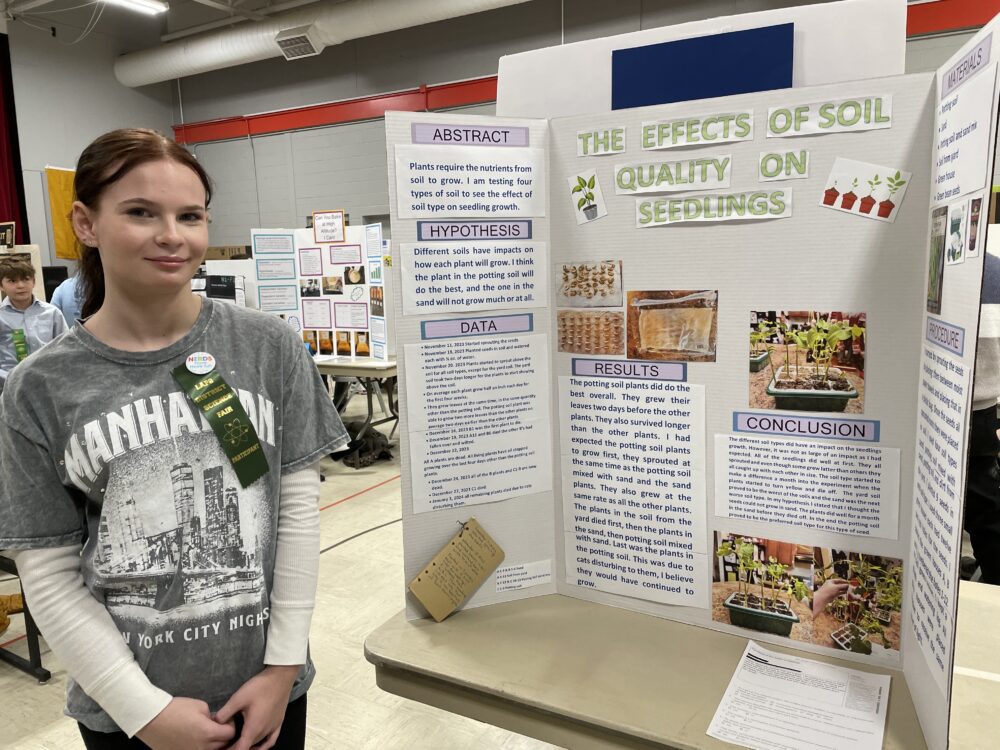
Aislin Connell, Junior Division
Sprouting seeds and growing plants under various conditions is a classic science fair experiment. What we liked about this one was the comparison of potting soil with local outdoor soil, and what the student learned about our local soil in the process. She also had an infectious enthusiasm for growing plants.
Acid vs. Rock: A Limestone Dissolution Experiment
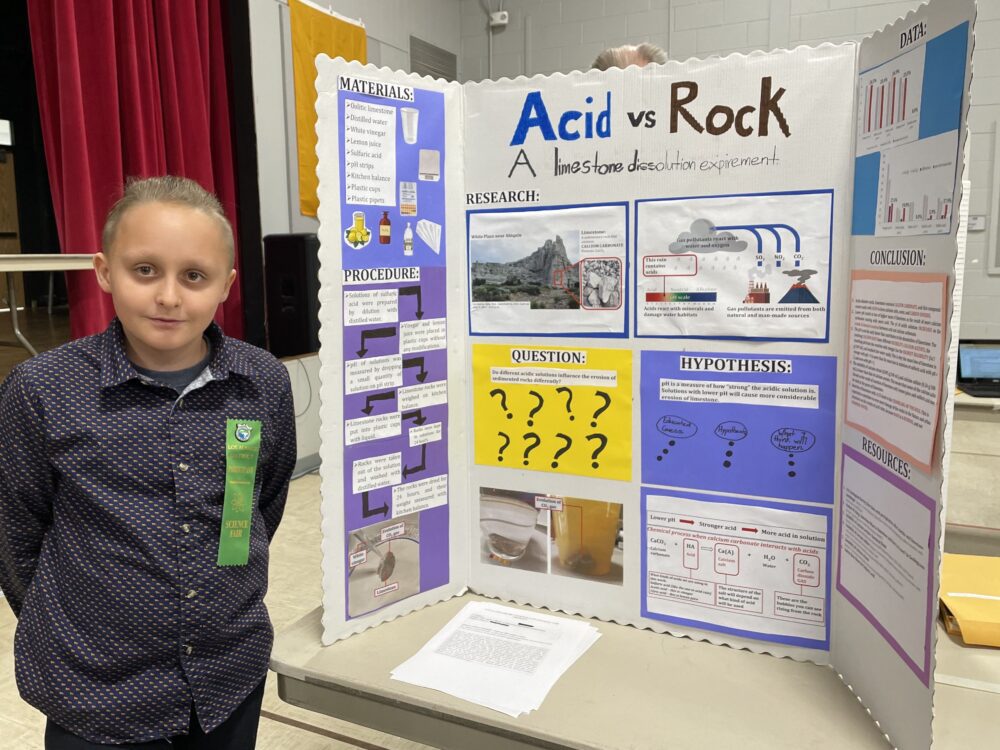
Benjamin Minko, Junior Division
This project was inspired by the student’s observation of our porous local volcanic rocks. The experiment tested whether the rocks were dissolved to a greater or lesser extent by various forms of acid, such as vinegar and diluted sulfuric acid. The student was surprised to learn that vinegar dissolved the rock to a greater extent than other acids, and found that this might have been the case because the byproduct of the dissolution is more soluble than that of other acids. He was able to apply the results to an understanding of the effects of acid rain.
Stick Movement in Flowing Water
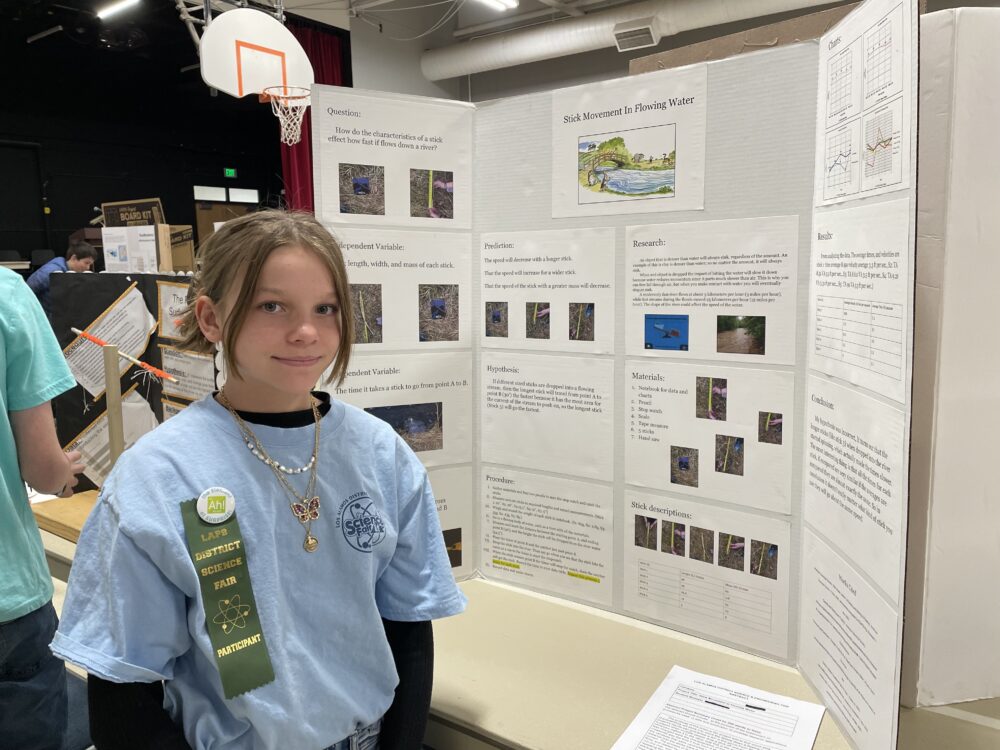
Rachel Bowlan, Junior Division
This project was inspired by playing the game of Pooh Sticks at a bridge in the Valles Caldera. The student used this bridge to test several sizes of sticks to try to determine the size that would move the fastest. She took careful measurements of various sticks before timing their movement down a 30′ section of the East Fork of the Jemez River.
Making Paint Out of Plant Material and Rocks
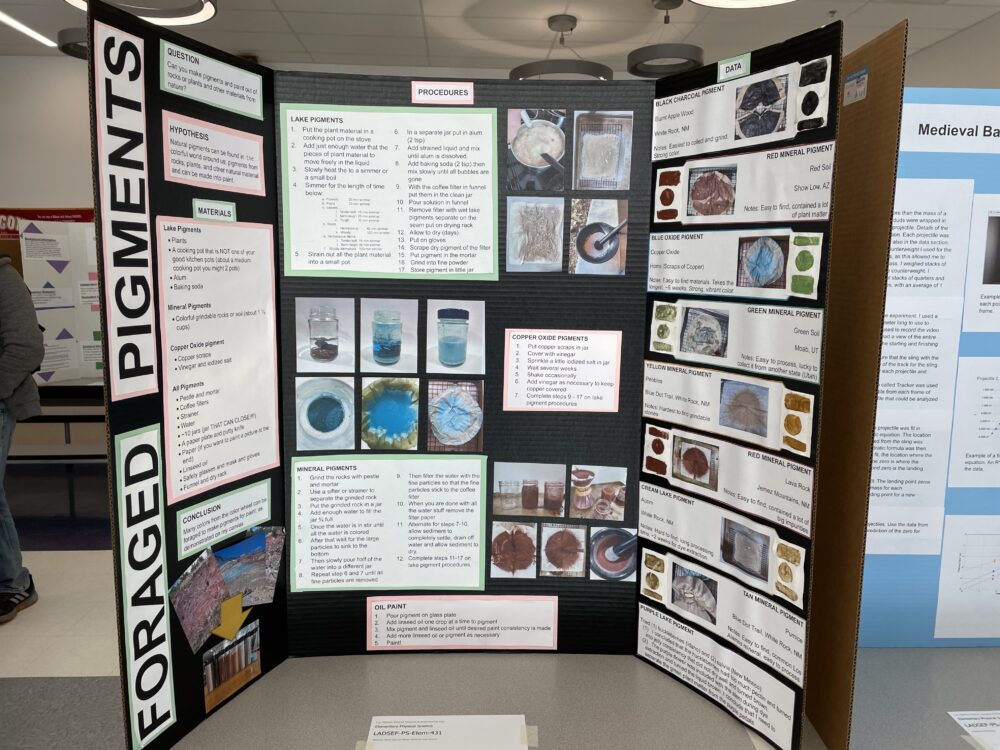
Laine Gauss, Elementary Division
This student ground up a variety of types of rocks and plant materials to derive pigments, and showed how each pigment could be used to color paint. Many of the materials were found locally, or found outdoors in other parts of the Southwest.
How Were Trees Around My House Impacted by Fire?
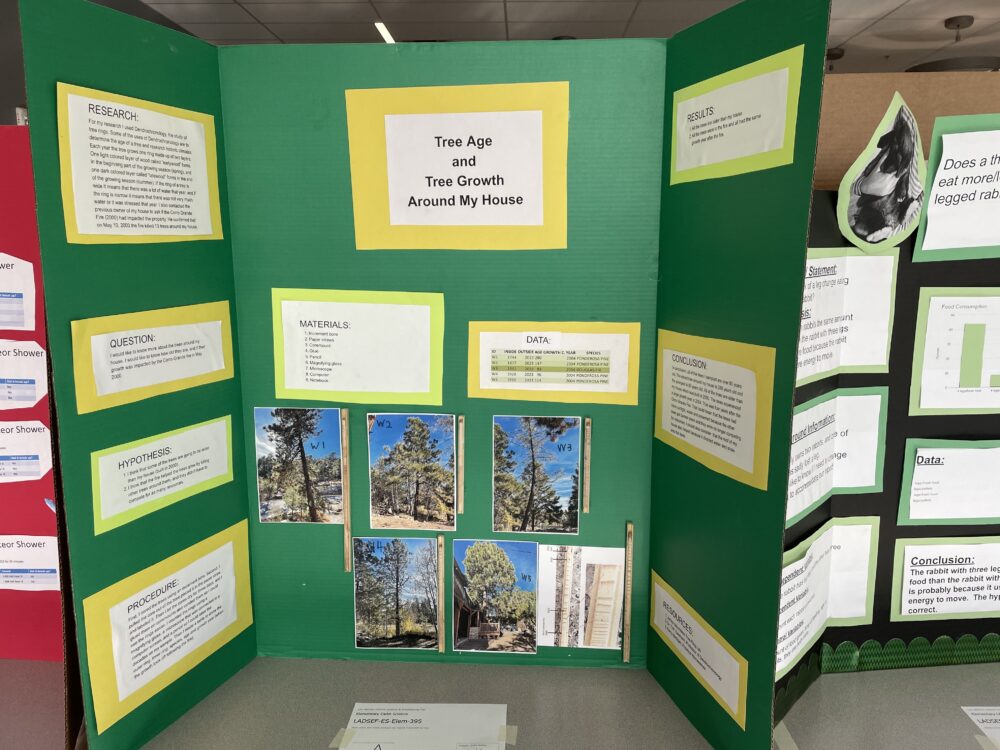
Walter Evans, Elementary Division
This study examined tree cores from the trees around the student’s house. Each tree species was identified, and its age was estimated. The student was surprised to learn that all of the trees were older than the age of their house. Through core sample analysis, they were able to see that the trees experienced a large growth year in 2004. The student concluded that the trees had more sunlight, water, and snowmelt in the years following the Cerro Grande Fire, because other trees were burned and there was less competition for resources.
Which Was the Best Meteor Shower in 2023?
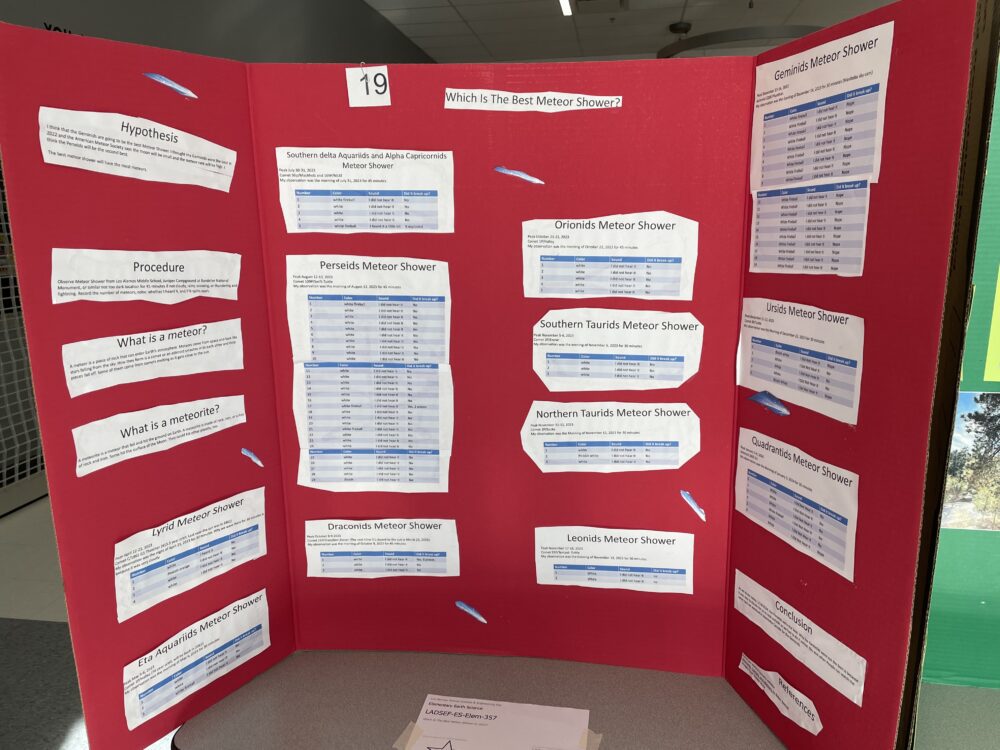
Eleanor Haaser, Elementary Division
Direct observations from meteor showers formed the basis of this project. The student counted the number of meteors seen during each shower and recorded the observed color, whether or not any audible sound was heard, and whether or not the meteor broke up. They concluded that the Perseids were the best on 1/19/2024 with the most visible meteors, but noted that the Geminids were obscured by clouds, so they watched online.
